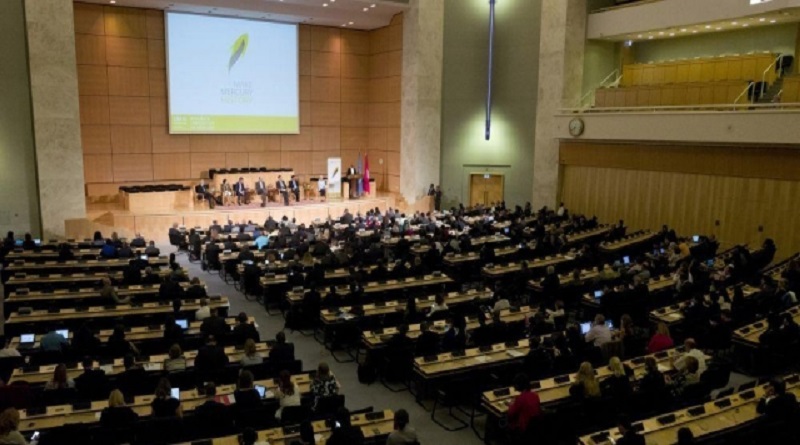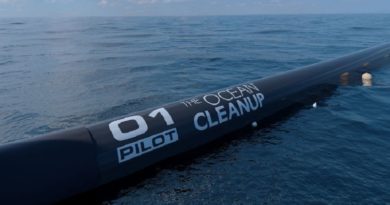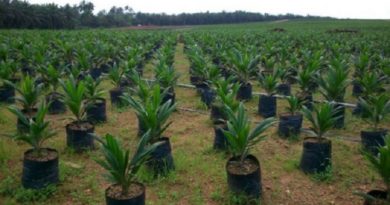Minamata Convention on Mercury: Two years after
It was exactly two years on Friday 16th August 2019 that the Minamata Convention on Mercury- a global treaty to protect human health and the environment from human-induced emissions and releases of mercury and mercury compounds- came into force.
The Convention became legally binding on 16th August 2017, 90 days after it exceeded the threshold of 50 countries that ratified it.
Annually, as much as 9,000 tons of mercury are released into the atmosphere, in water and on land. The largest source of these emissions is artisanal and small-scale gold mining, followed closely by coal combustion, non-ferrous metal production and cement production.
Mercury has a long environmental shelf life and a global pathway, as it cycles between the atmosphere, the ocean and land.
Charlie Brown, president, World Alliance for Mercury-Free Dentistry (WAFMD) on Friday 16th August 2019 said the Convention is a superb one off to an excellent start but that the challenge of molding it and implementing it lies ahead.
Brown, who opined that the Convention could become the prototype treaty for toxins in the 21st century as the Montreal Protocols was for the 20th, underscores the need for hard work on the part of Parties and civil society.
The WAFMD president said, “The Minamata Convention on Mercury is a superb convention off to an excellent start – but the challenges of molding it and implementing it lies ahead. With ambitious thinking and hard work by the Parties and civil society, it can become the prototype treaty for toxins in the 21st century, as the Montreal Protocols was for the 20th century. Or it can devolve into a scenario like lead paint – where the rich countries ridded their environments of this toxin while selling it to Africa, Asia, and Latin America.
“The first test comes at Minamata COP3: the African Amendment proposes the phasing out of amalgam, putting dental mercury on a par with the other major mercury products. Under the African Amendment, the end date of amalgam for children (as Europe has already done) comes in two years, followed by a negotiated timetable leading to mercury-free dentistry for all. The looming question is whether the rich countries, while stopping amalgam use at home, will block a worldwide phase-out so they may continue to sell and dump mercury dental fillings into Africa and other developing regions” he stressed.
As at Friday 16th August 2019, 112 nations out of the 128 nations that signed the Convention have ratified it.
Since it became legally binding in 2017, all hands by governments, non-governmental organisations, development agencies, professionals and other stakeholders have been on the deck to develop policies, programmes and create awareness across the globe on the dangers of mercury to human and physical environment and to make mercury history.
For instance, Nigeria has successful completed and submitted its Minamata Initial Assessment (MIA), the first of its kind in the world and she is at an advance stage of completing the National Policy on phase down of dental amalgam.
Besides, work is on going in the country towards the phase-down of the use of dental amalgam in vulnerable groups by June 2020 and phase out in all age groups by 2022 on a consensus based timetable.
Meanwhile preparations are in top gear towards the third Conference of the Parties to the Convention coming up in Geneva, Switzerland in November this year.
The Governing Council of United Nations Environment Programme (UNEP) had in February 2009 adopted Decision 25/5 on the development of a global legally binding instrument on mercury. However, following the conclusion of the negotiations at the fifth session of the Inter- governmental Negotiating Committee (INC5), the text was adopted and opened for signature at a Diplomatic Conference (Conference of Plenipotentiaries), held in Kumamoto, Japan from 10 to 11 October 2013, with a ceremonial opening in Minamata on October 9 same year.
Specifically, the objective of the Convention is to protect human health and the environment from anthropogenic emissions and releases of mercury and mercury compounds by measures: to control the supply and trade of mercury; to control mercury- added products and manufacturing processes including artisanal and small scale gold mining; on the environmentally sound interim storage of mercury and on mercury wastes on contaminated sites.




